The (Somerset and Cornwall) Light Infantry (Volunteers)

The 6th Battalion The Light Infantry is descended on one side from Light Infantry (the Somerset Light Infantry and the Duke of Cornwall's Light Infantry Volunteers), and on the other from Yeomanry (the North Somerset Yeomanry and the West Somerset Yeomanry). This brief history will trace the four units from their respective beginnings in the 18th Century until they are finally brought together in 1967 to form The Somerset Yeomanry and Light Infantry, now 6th Battalion The (Somerset and Cornwall) Light Infantry (Volunteers).
All four units grew and shrank according to military need. Key dates include:
1798-1801 Threat of invasion from the French, under Napoleon Bonaparte, forced legislative changes in the organisation and size of Volunteer units across England. When hostilities ended, many of the rapidly raised units were disbanded.
1859/60 Again, threat from the French, this time under Napoleon III.
1881 Radical reorganisation of the Army under Cardwell.
1907 The Territorial and Reserve Forces Act re-organised the Militia, the Yeomanry and the Volunteer Force. Volunteers were integrated into the Regular Army with the formation of the Territorial force, which was organised and equipped to fight alongside the Regulars both in the UK and overseas.
1914-18 Expansion during World War I.
1921 The Territorial Army was much reduced, due to defence budget cuts.
1938/39 World War II doubled the Territorial Army.
1959 Somerset and Cornish elements of the Regular Light Infantry amalgamated
1967 Territorials were re-organised.
The Light Infantry

See The Duke of Cornwall's Light Infantry and The Somerset Light Infantry (Prince Albert's)
more information of the DCLI and SLI TA to come ...

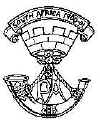 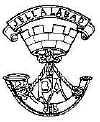
The Yeomanry
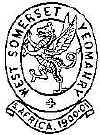 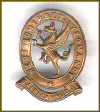
The West Somerset Yeomanry
The earliest troop, raised in 1794, was in Bridgwater. Four years later this and other troops formed the West Somerset Regiment of Yeomanry Cavalry.
The Regiment served in the Boer War as part of the 7th Battalion of the Imperial Yeomanry, where their steadiness under fire earned them the popular name of "The Fighting 25th". Their badge also bears the honour "South Africa 1900-01".
During World War I, the Regiment served with ANZAC as Royal Horse Artillery. After service in Egypt, Gallipoli and Palestine they went to the Western Front in 1918. They were retitled the 12th Battalion The Somerset LI and fought as infantry in France and Flanders.
In 1920 they were formed into two batteries of the 55th (Wessex) Field Brigade Royal Artillery. During World War II, they served in many parts of England until D-Day plus 21 when, as part of the Guards Armoured Division, they arrived in Normandy and fought through to Cuxhaven in Germany.
They therefore served as Gunners from the end of World War I until 1967, when they were merged with The Somerset Light Infantry (TA) to form The Somerset Yeomanry and Light Infantry.
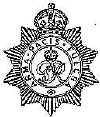
The North Somerset Yeomanry
The first troop was raised in 1798 in Frome, subject to a condition that it should not be required to march more than 10 miles from the town, but it was disbanded in 1802. However, The Frome Troop was re-raised in 1803, united with The East Mendip Corps in 1804, and designated the North Somerset Yeomanry Cavalry in 1814.
The Yeomanry were a select corps, with members accepted only on the recommendation of one or more serving members and usually paying an entrance fee. Their main employment in the early 19th Century was the suppression of riots, such as among miners in Radstock (1817) and among weavers in Frome (1822); since the Yeomanry consisted largely of farmers, their appearance did not always help in industrial disputes.
During the Boer War they became part of the 7th Battalion of the Imperial Yeomanry. The Regiment was reorganised as Dragoons in 1908, and went to France during World War I in that role.
During World War II, the Yeomanry were first employed in the Far East, then fought in Syria, and in 1943 were converted to the Royal Corps of Signals. As Air Formation Signals they served in the Western Desert, Sicily, Italy, and North West Europe. After the War the Yeomanry became the Armoured Regiment of 16th Airborne Division, joined 44th Royal Tank Regiment to become The North Somerset and Bristol Yeomanry in 1956, and in 1967 merged with The Somerset Light Infantry (TA) to form The Somerset Yeomanry and Light Infantry.
The Somerset Yeomanry and Light Infantry
Although the Regular battalions of the Somerset LI and the Duke of Cornwall's LI merged to become the Somerset and Cornwall Light Infantry in 1959, the Territorial battalions kept their county names. In 1967 these Territorial battalions and the Yeomanry merged to form The Somerset Yeomanry and Light Infantry.
In 1969, when the complete disbandment of the TA was being considered, it was reduced to a cadre of eight men, as was the Duke of Cornwall's Light Infantry (TA).
The 6th Battalion The Light Infantry
In 1971, on the expansion of TAVR, The Somerset Yeomanry and Light Infantry was disbanded and the 6th Battalion was formed, composed of four companies based at Bath, Yeovil, Falmouth and Camborne. At the same time, the Light Infantry volunteers had companies in Truro, Bodmin, Wakefield, Hereford and Durham. The Cornish companies were amalgamated in 1975, and a company of the Light Infantry and Mercian Volunteers based at Ross-on-Wye joined the Battalion. These were exchanged in 1981, when Truro and Bodmin became D Coy 6LI, and Ross-on-Wye moved to 5LI.
In 1979 new colours were presented by HM The Queen Mother at Bath, marching off the 4th/5th Somerset Light Infantry and the 4th Duke of Cornwall's Light Infantry colours. A new TA Centre and Harding House in Bath were officially opened by Field-Marshal The Lord Harding of Petherton GCB CBE DSO MC in 1984.
In 1989 6LI changed its title by Royal assent to become 6th Battalion The (Somerset and Cornwall) Light Infantry (Volunteers).
In 1992 the Home Service Force ceased to exist and the SLR was replaced by the SA80. In 1993 Taunton platoon moved from Batts Park to Bishop's Hull TA Centre, taking over the disbanded 155 Regiment RCT. Bishop's Hull TA Centre became the Battalion Headquarters in 1996.
1st July 1999
Under the 1998 Strategic Defence Review the Battalion is scheduled to amalgamate, on 1st July 1999, with the 4th Battalion The Devonshire and Dorset Regiment and 2nd Battalion The Royal Gloucestershire, Berkshire and Wiltshire Regiment to form "The Rifle Volunteers". The Light Infantry will maintain a single company in each County: Somerset Company (Light Infantry) with bases in Taunton, Yeovil and Bath. Cornwall Company (Light Infantry) with bases in Truro, Camborne and Bodmin. These companies will retain their links with the Regiment and will continue as the modern descendants of the two former County Regiments. |

